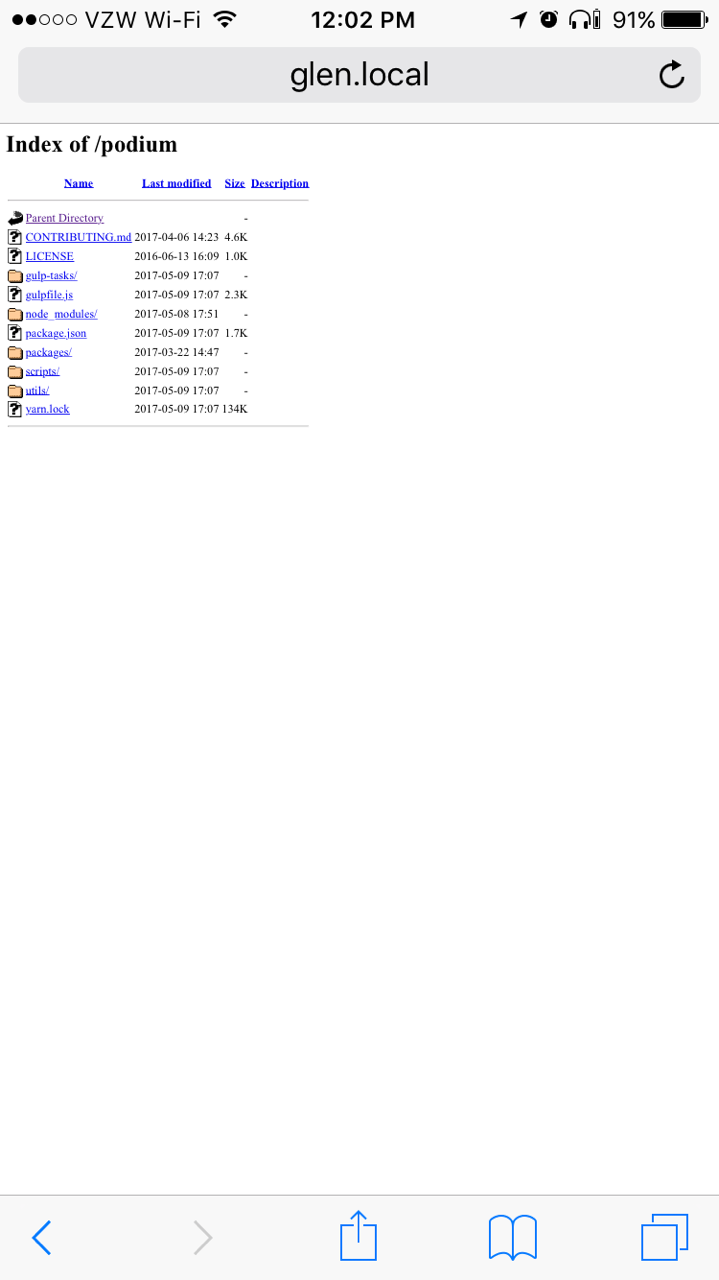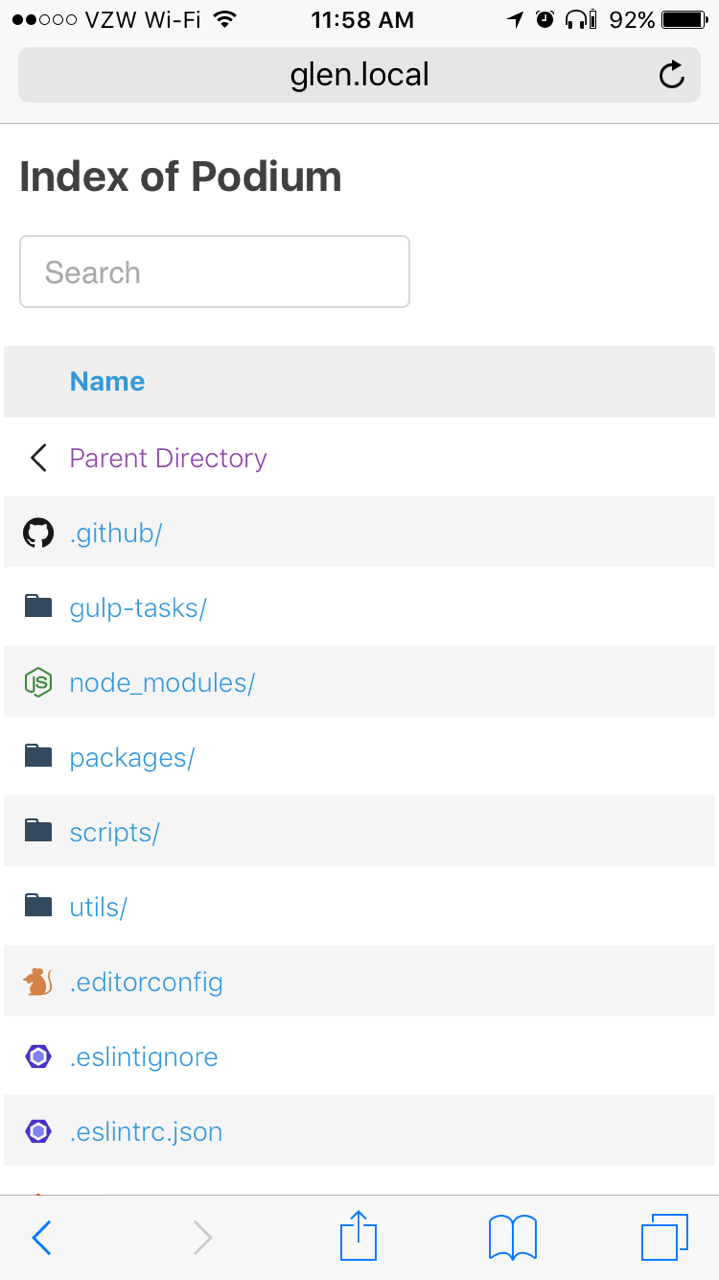A responsive Apache index page.
I was tired of seeing the ugly apache-generated index page, so I decided to do something about it. Inspired by Seti UI and atom file-icons, this project adds an .htaccess file which tells apache to use a table, among other things, instead of <pre>.
I'm going to assume you're using a Sites folder with apache, but it could be done differently. Wherever you see USERNAME, use your username.
- Clone or download the files.
- Add them to your
Sitesdirectory. The structure should be/Users/USERNAME/Sites/fancy-index. - Copy the
.htaccessfile up one directory to/Users/USERNAME/Sites/.htaccess. - Update your
DocumentRootin/etc/apache2/users/USERNAME.confto point to yourSites. This will also causelocalhostto point toSitesand you won't have to use the~USERNAMEto access it.
This is what mine looks like:
DocumentRoot "/Users/glen.cheney/Sites"
<Directory "/Users/glen.cheney/Sites">
AllowOverride All
Options Indexes MultiViews FollowSymLinks
Require all granted
</Directory>
Now restart apache sudo apachectl restart.
If you're having trouble or don't see the correct files, follow one of these guides (Yosemite, El Capitan, Sierra, High Sierra) to get your Sites folder working.
Now you don't have to zoom in or be a sniper with your finger!
| Default | Fancy |
|---|---|
 |
 |
Customizing hidden files and directories
If you want to hide some files or directories, for example the fancy-index directory, there is a IndexIgnore directive in .htaccess file.
- Edit
.htaccessfile in root directory. - Look for the "IGNORE THESE FILES" section.
- Update the
IndexIgnoredirective with the path of files and directories to hide, separated by spaces.- For example:
IndexIgnore .ftpquota .DS_Store .git /fancy-index
- For example:
- Save the changes.
- Reload the index page.

